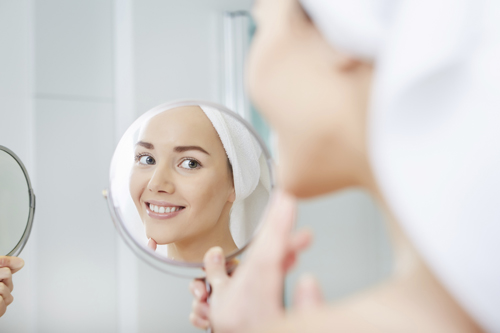
Between an increased sweat factor clogging pores, sport and day camp schedules disrupting morning routines and the need to slather sunscreen lotions onto already sensitive and breakout-prone skin, summer can seem like a minefield for tweens and teens struggling to keep a clear complexion. We had a chat with Dr. David Lortscher to pick up tips to help our kids save face.
Summer Skincare
- While wearing sunscreen year round is important, it is especially crucial during the summer with increased sun exposure.
- It is estimated that damage caused by ultraviolet rays from the sun is responsible for up to 80% of skin aging. Because there’s a delay in terms of when sun exposure occurred and when its effects manifest, you won’t see the effects of sun exposure immediately. This happens slowly and gradually over years.
- No sunscreen, regardless of strength, should be expected to stay effective longer than two hours without reapplication. Most of us do not apply enough, in theory! To ensure that you get the full SPF of a sunscreen, they need to apply 1 oz (2 tablespoons) to their entire body 30 minutes before going outside. Studies show that most people apply only half to a quarter of that amount, which means that the actual SPF they have on their body is lower than advertised. During long days spent outside at sports practices, summer camps, or the beach, each person should use around one half to one quarter of an 8 oz. bottle.
- SPF (Sun Protection Factor) is a measure of a sunscreen’s ability to prevent UVB from damaging the skin. Most sunscreens with an SPF of 15 or higher do an excellent job of protecting against UVB. For extended outdoor activity, use a water-resistant, broad spectrum (UVA/UVB) sunscreen with an SPF of 30 or higher.
- Good sunscreen choices include Solbar Zinc SPF 38 and Kiss My Face SPF 50 Sun Spray Lotion.
- As the days get sunnier, those with fair or sensitive skin may want to reduce or stop usage of products that have the potential to make the skin more sensitive to the sun, such as AHA (alpha hydroxy acids), retinol and prescription retinoids. As any increase in sun sensitivity with these ingredients is usually minimal, this change is typically not necessary for most people.
- Lighten skincare as the days get longer and lighter. Think of cream as heaviest, lotion as intermediate, and serum as lightest.
- Swapping out creamier cleansers for gel-based, such as Avene Cleanance Gel or Boscia Purifying Cleansing Gel. If you have oily skin in the summer, opt for a foaming cleanser such as CeraVe Foaming Cleanser.
- For moisturizers, I would recommend a lighter, gel-based moisturizer that will provide hydration without leaving skin feeling greasy. Many Asian Beauty products have perfected the light-but-effective moisturizing product. Consider trying Scinic Aqua AIO or LJH TeaTree 90 Essence. Another good option commonly found in drugstores is Clean & Clear Morning Burst Hydrating Gel Moisturizer.
Teaching teens proper skincare
- Discuss establishing a simple daily cleansing regimen with your teen. A good way to remember is to establish a routine around brushing your teeth (which you should be doing twice a day!). Using a gentle cleanser once in the morning and once in the evening before bed is ideal.
- Explain the difference between cleansing and exfoliating. Exfoliation is an option, not a necessity. Make sure your teen keeps in mind that exfoliation is easy to overdo! A “shiny but not oily” appearance, redness, tightness, and dryness may be signs that you are overdoing it.
- A gentle way to physically exfoliate your skin is with a konjac sponge, made from fibers of the root of the Asian konjac (“Konnyaku”) plant. The sponges may be used to cleanse the face, either with plain water, or combined with a small amount of any facial cleanser. They have a mild exfoliating effect, yet are typically soft, and gentle on the skin. Some konjac sponges are infused with other ingredients, such as green tea, charcoal, clay, etc. If you do use one, I’d advise starting with the natural variety. Remember, they are only gentle if soaked in enough water to obtain the desired gel consistency, and are only as gentle as the pressure applied when using them! So use common sense, keep them clean, and switch to a fresh one after a couple of months.
- Choose products that are tailored for your teen’s skin type and needs – acne-prone skin, sensitive skin, dry skin, oily skin, etc!
- While drugstore products may work for some, prescription ingredients are much more effective at targeting acne. In fact, prescription ingredients are proven to effectively eliminate 90% of acne, whereas drugstore products eliminate only about a third. Look for customizable prescription formulas that are tailored for your teen’s skin type, medical history, current skincare regimen, and skin goals.
- Checking all skincare products on cosDNA.com, including body washes and body lotions, can be quite helpful to avoid pore-clogging ingredients. Pull up and run the ingredient list through the “Analyze Cosmetics” section of their website (the website of the manufacturer should have an ingredients list, or check other websites that sell the product, such as Ulta or Amazon). Once you click “Analyze”, look in the “acne” column—if there are any 3’s, 4’s, or 5’s, consider stopping use of this product. (Of course, these ratings are a guide, as individual responses vary.)
- Do not pick at pimples or attempt to extract whiteheads/blackheads! This can lead to scarring and worsen breakouts! In certain skin types, inflamed acne blemishes may leave narrow deep divots, called “icepick” scars. These may look like enlarged pores, but are actually scars.
- Research skincare trends before taking the plunge! Social media influencers on YouTube, Instagram, etc. (popularly dubbed beauty gurus), often toot homemade treatments and trending products to try. Make sure to do your research or consult a dermatologist if you’re unsure!
- For example, using a DIY lemon juice treatment as a home remedy for acne and/or dark spots can backfire, so we do not recommend it. Using lemon juice on your skin can cause significant dryness, redness and irritation. Lemon juice may have an exfoliating effect on the most superficial corneocytes (dead skin cells) of the epidermis, but there are better ways to exfoliate. Although the Vitamin C in lemon juice may in theory have a beneficial effect in lightening skin, the furocoumarins in lemon juice can interact with sunlight and cause blistering rashes and hyperpigmentation (called phytophotodermatitis) in some people.
- Another popular DIY treatment is baking soda. Some people try baking soda as a cost-effective scrub or mask. Baking soda (sodium bicarbonate) is pH 9; the pH of the skin is 4.5-5 or so. (To review the pH scale: 1 is acidic, 14 is alkaline, 7 is neutral). Scrubbing your face with a paste of baking soda would be very harsh and disturb your skin’s natural barrier, or acid mantle. (Acid mantle refers to the characteristic of the skin’s surface that protects from harmful growth of micro-organisms and from external irritants.) A (very!) dilute baking soda as a cleanser for acne, while not something we recommend, would likely not cause harm for most people. But it’s just not worth risking, as your skin may react to this assault by becoming red, raw and sensitive—and in susceptible people this irritation can lead to acne breakout.
 David Lortscher, MD, is a leading board-certified dermatologist and the founder and CEO of Curology, a skincare company that brings personalized dermatology treatment for acne into the privacy of the home through online consultations with expert dermatology providers. Visit www.curology.com for more information.
David Lortscher, MD, is a leading board-certified dermatologist and the founder and CEO of Curology, a skincare company that brings personalized dermatology treatment for acne into the privacy of the home through online consultations with expert dermatology providers. Visit www.curology.com for more information.







Leave a Reply